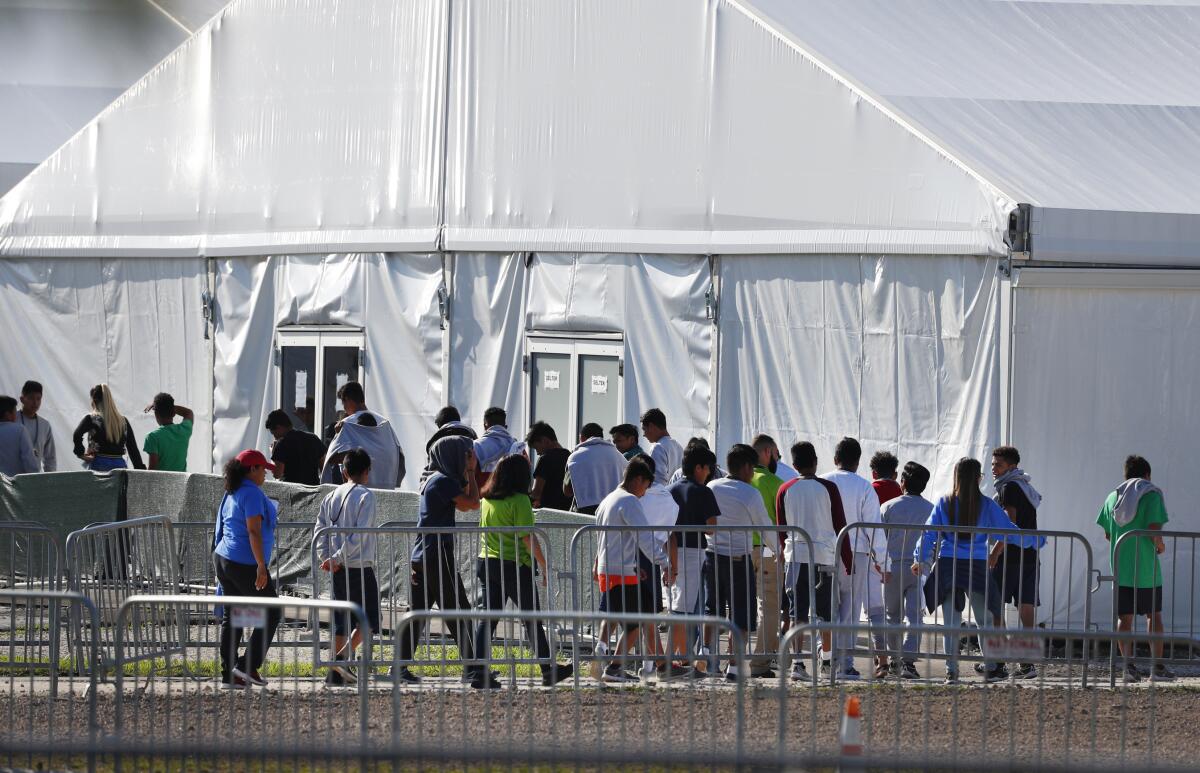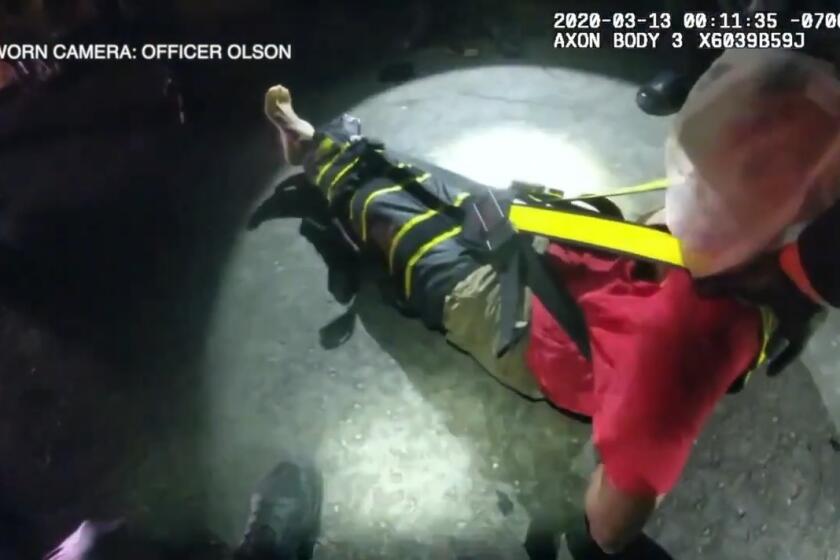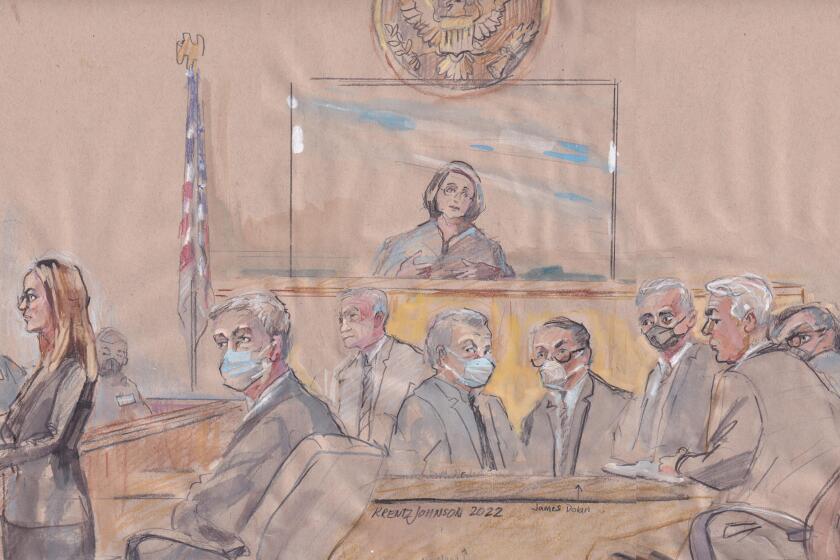Judge urges push to find 545 parents separated from children at the border

Painstaking effort to reunify families part of sprawling border separation litigation in San Diego
A San Diego federal judge overseeing the landmark litigation on family separation at the border directed attorneys to stay the course in the painstaking search for the parents of more than 545 children so the families can be given the opportunity to reunite.
“This, of course, is the most significant piece remaining, the location of these parents,” U.S. District Judge Dana Sabraw said during a hearing Thursday.
This particular search effort has been creeping along for more than year, since the federal government — at Sabraw’s direction — identified an additional 1,556 children who’d been separated from their parents at the southwestern border as part of a previously unknown pilot program.
Starting with a pool of 1,030 children who had a phone number on record, volunteers with law firms and the nonprofit organization Justice in Motion — which coordinates with outreach networks in hard-to-reach regions around the world — have so far located the parents of 485 children.
The task has not been easy from the start, as bare bones and outdated information leads to dead ends. Many of the parents were deported back to Central America and Mexico, where displacement due to violence, poverty and corruption is commonplace. The coronavirus then shut down in-person investigations entirely.
But attorneys reported Thursday that the health threat has eased somewhat, and areas throughout Latin America have become more accessible in the past six to eight weeks. On-the-ground tracking efforts have turned up the parents of 47 children in that short time.
The focus remains, for now, on the parents of 545 children who have been unreachable up to this point. There remains another 104 children who have no contact information on record, plus a group of 422 more children who are not considered eligible by the government for reunification because their parents either have serious criminal histories or pose some other risk.
Volunteers are also counting on outreach campaigns, including letters sent to some 1,600 addresses on file and Spanish-language media coverage that provides a toll-free number for parents to connect with attorneys.
The effort ultimately leads to the question of whether the parent wants to reunite. The children have all been placed with sponsors in the U.S., such as extended family members, and are proceeding with their own immigration cases.
Of the 485 parents who have been reached, lawyers say some have tentatively indicated they may want to have their child returned home. However, none of the parents have definitively made such a request.
Attorneys for both the government and the American Civil Liberties Union, which is representing the parents, are continuing to discuss how to handle potential requests for parents to return to the U.S. — not only to reunite with their child but to reinstate an asylum claim.
This is the second batch of separated parents that have been the subject of a massive court-ordered search in this case.
The first search and reunification effort was aimed at the parents of children who had been separated and were in the government’s care as of June 26, 2018, shortly after the Trump administration’s “zero tolerance” policy had been widely rolled out across the southwestern border. The program put adults caught crossing into the U.S. illegally into criminal custody for misdemeanor prosecution and separated them from any accompanying children, who were placed into federal shelters.
The children and adults then proceeded through the U.S. immigration system on separate tracks, with no clear way to reunite the families or keep their cases together once the adults were out of criminal custody. Many parents had no idea where their children were. Hundreds of parents were deported without their children.
Some families who presented themselves at ports of entry to claim asylum were also separated.
In June 2018, Sabraw ordered the government to help track down all separated parents. The effort took about six months, with more than 2,000 families reunited. The effort was made easier because most of the parents were still in U.S. immigration custody.
It didn’t become public until later that the family separation program had actually begun much earlier — the summer of 2017 — as a pilot program in Texas. A new accounting found an additional 1,556 children who had been separated — the group now at the center of the current, and much more difficult, search effort.
President Donald Trump, facing mounting backlash to his administration’s policy of widespread family separations, backed off on the practice — a week before Sabraw issued his initial order in June 2018.
However, family separations have been allowed to continue on a smaller scale under the litigation, with carved-out exceptions in cases where parentage is doubted or the child is at risk because of a parent’s serious criminal history or health. Separations also occur if a parent goes into criminal custody, but under the court order the family must be allowed to reunite once the criminal case concludes, as long as the offense is not considered serious.
In a second prong to the litigation, Sabraw has ordered attorneys and government agencies to hammer out a protocol for handling future separations, including an interagency database to track families and ensure easier reunification.
In an affidavit to the court, Robert Costello, executive director of information technology for Customs and Border Protection, said the database is progressing but won’t be fully operational until 2022. The interface will connect ICE and Border Patrol with Health and Human Services, the agency that shelters separated children, by tracking an individual’s journey through the immigration system.
However, the system is not designed to include movements through the criminal system, such as the U.S. Marshals Service or Bureau of Prisons, where parents may spend time in custody before being transferred to immigration detention, Costello said.
Judge Sabraw challenged the omission, pointing to his original preliminary injunction and recommendations by the Office of the Inspector General to expand information sharing.
The two agencies “ought to be brought into the fold as part of this effort to have full communication between the agencies, so parent and child know where each other are and can be matched up at the appropriate time,” Sabraw said. He stopped short of issuing a court order and urged the parties to work it out.
That gap in information was apparent in a survey of legal service providers and child advocates who help separated children through the immigration process. The survey found that while information sharing among agencies has improved, about half of the time service providers were unable to learn the exact location of parents who had been either in marshals’ custody, repatriated or released into the U.S.
The latest news, as soon as it breaks.
Get our email alerts straight to your inbox.
You may occasionally receive promotional content from the San Diego Union-Tribune.




